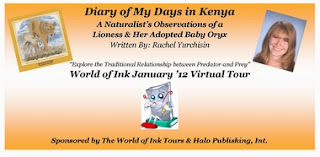Molly Nero discusses the inspiration behind her book:
Teaching children of elementary age has been my life, so it makes sense that Smarty Pig is set in that environment. Teaching 4th grade awakened my love of writing. As I encouraged and nurtured my students in their own writing, my own abilities were strengthened. Being critiqued by ten year-olds was very humbling, but allowed me to make sure that I was relating to them as my audience.
Teaching children of elementary age has been my life, so it makes sense that Smarty Pig is set in that environment. Teaching 4th grade awakened my love of writing. As I encouraged and nurtured my students in their own writing, my own abilities were strengthened. Being critiqued by ten year-olds was very humbling, but allowed me to make sure that I was relating to them as my audience.
Moving from the classroom to the music room brought changes not only to my teaching, but to my relationship to my students who ranged from kindergarteners to 5th graders now.
I was never your “typical” music teacher. I would start class with everyone dancing along to the beat of an “Alvin and the Chipmunks” song with arms flailing and feet jumping. Flinging music papers across the room to pass them out was another way to allow my students to escape from the structured classroom into my spontaneous music room. Every child wore smiles from ear to ear. I worked hard to create a classroom where kids could talk to me about their frustrations concerning different things, and that has given voice to my writing.
During the state testing schedule, students would arrive for music absolutely drained and despondent. The idea for Smarty Pig came from hearing students express their growing apathy toward school after several days of taking these tests. Testing was taking over the creativity and joy of learning. As the years passed, I heard this from younger and younger students.
My object in Smarty Pig is to uplift our youngest learners early in their academic life to see the value and fun in learning. She gives learning a purpose in the lives of her family, making it important and relevant. Other Smarty Pig stories will be dealing with more situations and frustrations that young students deal with like test-taking anxiety and bullying. What was my inspiration for Smarty Pig? The students that I have been blessed to teach for so many years. They are my inspiration.
Copy this code to your website to display this banner!
<a href="http://storiesforchildrenpublishing.com/MollyNero.aspx" target="_blank"><img src="http://i.imgur.com/PhCg0.jpg" alt='Create your own banner at mybannermaker.com!' border=0 /></a><br><a href="http://www.mybannermaker.com/">Make your own banner at MyBannerMaker.com!</a>Book Lovers Blog Hop:
Make friends, share the love of reading and be entered to win a FREE book!
What is a blog hop?
A blog hop is a link list that is SHARED ON MULTIPLE BLOGS. When several blogs put the same link list code on their blog, the exact same list appears on each blog.
Blog visitors can submit their entries on any blog that contains the list. The entries will appear on each blog where the list resides.
Blog readers see the same list on each blog, and can "HOP" from blog to blog seeing the same list of links to follow: BLOG HOP!
A blog hop is a link list that is SHARED ON MULTIPLE BLOGS. When several blogs put the same link list code on their blog, the exact same list appears on each blog.
Blog visitors can submit their entries on any blog that contains the list. The entries will appear on each blog where the list resides.
Blog readers see the same list on each blog, and can "HOP" from blog to blog seeing the same list of links to follow: BLOG HOP!
There will be three (3) winners and each will get a different book in the Book Giveaway.
Copy this code to your website to display this banner: a href="http://familiesmatter2us.blogspot
Book Giveaway Rules:
· Join the Book Lovers Blog Hop. (One entry) · Follow the World of Ink Tour and leave a comment per tour blog stop.
Make sure to include your safe email so we can contact you if you are the winner.
Example: vsgrenier AT storiesforchildrenpublishing DOT com. (One bonus entry per blog stop)
· Ask a question per World of Ink Tour blog stop. (One bonus entry per tour blog stop)
Please play nice and follow our simple rules! Make sure to FOLLOW AT LEAST ONE PERSON and as many other blogs as you'd like to have more follow back. This is what makes Book Lovers Blog Hop work, so if you're not willing to follow, please don't link up.
Remember to leave a comment on the blogs you follow to let them know you found them here at FAMILIES MATTER, and if someone follows you, be sure to follow back. If you follow us and leave a comment, we'll definitely follow you too!
Book Lovers Blog Hop is Open…
January 2, 2012 at 12am MST and closes January 31, 2012 at 11pm MST!










